The awakening of life in spring is always a miracle of Nature! The Sun has only to warm a
little more and seemingly dead Nature starts waking up from winter sleep and everything around bursts with vital force. Although
this miracle happens every year, it fills the soul with amazement again and again! Yes, it is always a miracle, but what happens in
our French domain cannot be called anything other than a miracle within a miracle! Magic or Fairy Island – this name is the most
appropriate to describe what we can see there! In fact there is nothing magical in the phenomena called into being in our estate by
the working of the psi-generator (dark matter generator) whatsoever, but they indeed look like magic, especially if we
compare them with what happens in Nature in France and the rest of our planet!
Despite the indubitable riches and variety of Nature it, nevertheless, acts blindfolded. As I have already written in
other articles, Nature does not have consciousness! This conclusion follows from the fact that the plants which belong
to one climatic zone cannot live in the conditions of another, even the neighbouring one. Not to mention
that if a plant gets into a very distant climatic zone, for example, from the equatorial to the temperate one: being carried from one
zone to another which differs so drastically in climatic parameters, the plant dies very quickly. The reason for this is quite clear:
it is unable to adapt to new conditions. In fact, when the climate changes, the plants of some particular climatic zone die and other
plants which can adjust to the new climatic conditions appear in their place! This is what has been happening for the four billion
years of the existence of life on Midgard-earth!
If Nature had reason, it would come to the conclusion that in order to prevent vegetable organisms from dieing when
the temperature drops sharply, it would need to prevent the arboreal sap (the blood of plants) from freezing at temperatures below
zero! If Nature had reason, it would allot plants the ability to synthesize water, as the absence of water during
droughts results in rapid death of most plants and, as a consequence, in the death of the particular ecological system. If Nature had
reason, it would transform soil unfavourable for plants into a favourable one or would create such conditions that plants of
any climatic zone could grow in any soil, including highly adverse ones (for example, limestone). If Nature had reason, it
would create conditions when plants alone could create everything they need for optimal living conditions, because plants
are not animals and cannot leave their habitat in order to look for something with more suitable conditions!
We can go on searching for newer confirmations, but the abovementioned is enough for us to draw the conclusion that Nature
does not have reason! It does not belittle either Nature or everything it created, but there is no reasoning element in it whatsoever!
Charles Darwin erred a lot, but his conclusion that Nature’s driving force is natural selection was correct. Plants adapt
themselves to the conditions of their growing. Those which are unable to adjust to changing climatic conditions die and those for which
these conditions are acceptable occupy their place. In other words, it is plants that adapt themselves to the environment, not to
the contrary! At the same time every particular type of plant has a very limited scope within which it can adapt to the changing environmental
conditions: if that is exceeded, even a little, they die! The aforesaid demonstrates that the processes in Nature are not reasoning!
At the same time the fact that all previously mentioned deficient properties were introduced in plants by means of the psi-field
generator shows that these and many other tasks can be solved if reason and the understanding of the nature of living matter is applied.
This proves without controversy the absence of reason in Nature and the absence of any planetary reason or Logos!!! Despite the
expedience which is inherent in Nature, our Midgard-earth, nevertheless, does not possess reason! The self-regulation mechanisms
of the ecological system which are observed on our planet have nothing to do with reasoning actions! (More information you can find
in my book The Last Appeal to Mankind, Chapter 3. Psi-fields in nature
and in the evolution of intelligence.)
However, when Reason completes what Nature was unable to do, the real wonders, that were always considered to be impossible,
do happen! But reason and reasoning life is a product of Nature, so it turns out that Nature, nevertheless, solved the problems, although indirectly,
through a transmitter of reason which She created! Exactly here is the triumph of Nature, living matter and reason! When developing reason
comes to understand the mechanisms and principles of Nature, in particular of living Nature, the carrier of reason becomes a creative source,
and they start supplementing each other with amazing harmony which is the only way for reasoning life to develop, no matter what form it
may have. I hope that the results which were obtained in our domain by means of the psi-field generator will serve as proof that this way is
possible.
And now it is time to see these proofs…
The facts given in the previous seven articles of the series "The Source of Life"
are this kind of proof. It is of interest that they allow us to observe the process of gradual harmonious co-operation between reason and Nature.
The psi-field generator or dark matter generator was created some six years ago so as to save plants which had got into extreme living conditions.
I had to change the generator somewhat over these six years introducing newer and newer programs necessary to solve newer and newer
problems with which Nature presented us. According to space standards six years is an instant for Midgard-earth, however, it was precisely this
instant during which fundamentally important problems which Nature was unable to solve over billions of years of development of life
on Midgard-earth, were solved! Here is the advantage of the reasoning approach over the blind natural one.
Due to the fact that the psi-field generator created the non-freezing arboreal sap in plants, their ability to synthesize water and many
other properties necessary for their optimal development, we achieved the successful survival of plants from the equatorial, subequatorial, tropical
and subtropical climatic zones under open European sky in the temperate climate of central France. Moreover, the plants did not just survive in the
worst and actually extremely harmful, for them, soil, but also grew from 5 to 10 times quicker than they would do in the best conditions indicated
in the reference data! This was not all we achieved with the help of the generator and the programs installed in it!
The subterranean waters and soils were purified and decontaminated; the environment within the limits of our domain returned to that of
several hundred, or maybe several thousand years ago when human activity had not done devastating harm to all living things yet. This triggered
the appearance of vegetable organisms which had disappeared several hundred years ago! I can enumerate unbelievable, from the point of view
of modern science, achievements for a long time, but I consider it to be much better to reveal the next facts which confirm these deductions.
As soon as the sun warmed the earth a little more, everything in our domain began to flower vigorously. Moreover, we observed the
simultaneous flowering of plants which do not usually flower at one and the same time! Hyacinths in full bloom by the middle of March (Fig. 1)!
When they opened their inflorescences to meet the Sun it appeared that they belonged to the variety Blue Topaz which was not evident in
February when their buds appeared. The flowers of our Hyacinths have an unusually bright blue colour and are very big even for this variety.
There is another oddity with the Hyacinths: the rose-violet ones bloomed much later than the blue ones, and they had not done it by the middle
of March (Fig. 2). The flowers of rose Hyacinths began to open timidly only on March, 18 (Fig. 3). Nevertheless, they were still unable to compete
with the splendour and beauty of blue Hyacinths (Fig. 4).
As I already mentioned before, according to reference data, these bulbs should be kept in a dry place at a temperature not lower than +15 degrees
Celsius, planted into soil when it is warmed up to 10 or 12 degrees and dug up every year! Nobody ever dug up and re-planted the bulbs in our estate.
Nobody even knew that they grew in our park, because Svetlana paid attention to them for the first time two or three years ago when they bloomed.
Most likely, it was previous proprietors of the castle who planted them; however, it is not clear which ones. It is also of interest that we have owned
the castle since the end of 1999, almost ten years now, and Svetlana saw flowering hyacinths relatively recently! A question arises: why did the
hyacinths not flower for 7 or 8 years and why did they appear? I repeat, every year the bulbs of hyacinths and tulips should be dug up and kept in a
dry and warm place, but nobody ever did it on our estate!
Moreover, in 2003 climatic “surprises” began, that was why the psi-field generator was created. The weather in France has been extremely
challenging for the last six years: there were frosts of twenty degrees below zero, snow and glaciations in winter (Fig. 5 and Fig. 6) and it was raining
incessantly during almost the whole autumn, part of the winter and spring and everything was literally inundated (Fig. 7 and Fig. 8)! But all the
reference data indicates that the bulbs of hyacinths cannot tolerate high humidity! They rot quickly, so the fact that they did not freeze
at temperatures below zero and, moreover, did not rot in this great quantity of precipitation says that this could only happen in the active area
of the psi-field generator! So, the fact that hyacinths appeared after six years (maybe more) is incredible and if we take into account that all bulbs
should have died from frost or rot, flowering hyacinths can be fully considered another “miracle” created by the psi-field generator!
Certainly, nobody created a special program so that this kind of thing happened exactly with hyacinths. The matter is that there is a complex of
programs designed for the psi-field generator which solves almost all situations which almost any plant can face independent of the climatic zone in
which it was formed initially! If we get the possibility to grow plants of different climatic zones together, we can easily solve many of the problems
with food which modern humanity faces. And the chance of multiple harvests without any chemical additives or exhaustion of both soil and plants
offers almost unlimited possibilities for agriculture. Not to mention that the acceleration of plants’ growth from 5 to 10 times, mostly trees (especially
of valuable slow growing varieties), will allow us both to stop deforesting Midgard-earth and to recover the lost lungs of our planet very quickly.
The analysis of practical results regarding the application of the psi-field generator shows that the speed of growth, trees in particular, increases and
this happens on the worst soil — limestone and red clay in which the majority of plants cannot grow at all (Fig. 9 and Fig. 10)!
|
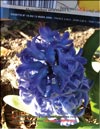
Fig.1 |
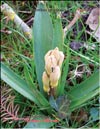
Fig.2 |

Fig.3 |
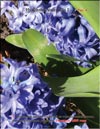
Fig.4 |
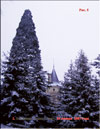
Fig.5 |

Fig.6 |
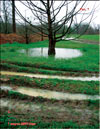
Fig.7 |
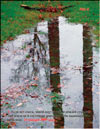
Fig.8 |

Fig.9 |
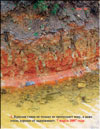
Fig.10 |
Let us come back to what is going on in our domain. Several days passed and the rose hyacinth bloomed fully, showing to the
Sun and the still very cold wind its gentle rose flowers (Fig. 11). The appearance of tulips and narcissi was also a surprise for the same
reasons. Tulips showed their leaves for the first time in February and they appeared here and there among the trees of our park, where
nobody ever planted them. So, here they are: in the middle of March the bright multicoloured spots of still unopened tulips show off
among green grass, despite the still cold soil and night frosts (Fig. 12).
At the same time the size of our flowers is much bigger than that of their colleagues outside our domain. Their huge leaves look
somewhat small in comparison with the buds and exactly the latter give the impression of “small” leaves. Despite their “narcissism”,
narcissi were eager to keep pace with hyacinths and tulips. Although they could not outrun the hyacinths, they decided to do it with
tulips and hurried to bloom before the latter could open their buds to greet the Sun (Fig. 13 and Fig. 14).
Cowslips (Primula veris L.) began to bloom at the beginning of February and did not even “think” to stop! They appeared
in the glades of our park every day (Fig. 15). Daisies do not want “to make a mistake” and we can observe a great number of their
bright yellow faces in snow-white collars in our glades and meadows (Fig. 16). A lot of Dog-violets (Viola canina L.) appeared
in our domain at the beginning of March. Look at this “violet invasion” (Fig. 17 and Fig. 18), they are everywhere! Our dog-violets
have a rare saturated-blue colour and they are considerably bigger than the dog-violets outside our domain (Fig. 19). By the way,
according to reference data, dog-violets flower from April to June, not at the beginning of March, and grow on dry and rich in
minerals soil! The soil in our domain cannot be called dry at all at this time of the year and, under no circumstances, rich in
minerals! After all, neither red clay nor limestone is famous for their content of minerals: they are the poorest soils.
Chestnuts (Castanea verca Gaerth.) behaved unusually this year! Their buds began to swell in February and light-green
young leaves appeared from them in the middle of March (Fig. 20).
|
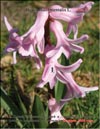
Fig.11 |
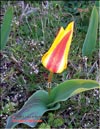
Fig.12 |
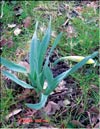
Fig.13 |
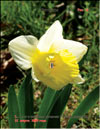
Fig.14 |

Fig.15 |
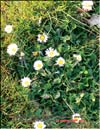
Fig.16 |

Fig.17 |
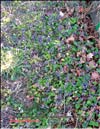
Fig.18 |
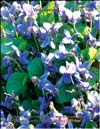
Fig.19 |
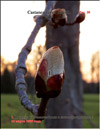
Fig.20 |
According to reference data, edible chestnuts produce leaves in April or May and bloom in June or July! In other words,
the lancet leaves of 10 to 25 cm appear first and spiky inflorescences of 10 to 35 cm appear after them in a month or two! This is what the
reference data says and here is what happens in our domain in the active area of the psi-field generator!
When young leaves of our chestnuts continued to grow quickly and began to open a little, their inflorescences peeped through
the thinnest silk film on the buds (Fig. 21)! This phenomenon can never be observed in chestnuts (or in most plants), but it is not an optical
illusion! Indeed, the inflorescences appear simultaneously with young leaves from the slowly opening buds (Fig. 22)! This
miracle happens in the middle of March, and this cannot be, because at this time of year even chestnut leaves should not appear,
let alone inflorescences which should be observed only within a two month term after the leaves! However, in our domain
chestnut leaves and inflorescences appeared in March simultaneously!
Someone may think that I am mistaken, not being a “specialist”, and just confused leaves coming from the buds with inflorescences, because
there is nothing that can be distinguished yet! Alas, I have to disappoint “a doubting Thomas”! And I do not have to do anything for this: Nature
will do it for me! Only a couple of days passed and the chestnuts fully opened their buds and showed us both their young leaves and young
inflorescences without any “veils” (Fig. 23)!
It is unbelievable: just two days passed since the picture of the bud in the phase of opening was taken and we can see pretty large light-green
young leaves and fully formed inflorescences (Fig. 24)! So, we observe another phenomenon which cannot exist in principle, but
does! One need not be a “cool specialist” to see that young chestnut leaves and inflorescences appeared simultaneously from the buds
and this momentous event happened in the middle of March!
Some more days passed and it is totally clear that the chestnut inflorescences have developed extremely quickly together with young leaves
which have grown extraordinarily quickly too (Fig. 25). This was not happening with one “mad” chestnut bud, but with all of them, which
indicates that we are witnessing a fundamentally new phenomenon regarding these chestnuts. The spectacle of young chestnut leaves
covered with tender fluff next to inflorescences is amazing and highly surprising. I am sure that nobody has ever seen such a picture! Although
not all buds have opened yet, we have no doubts about what will appear out of them on the next sunny day despite a cold and piercing northerly
wind (Fig. 26).
Indeed, unbelievable phenomena take place in the active area of the dark matter generator! It is of interest that it was not young nursery
chestnut saplings which reacted so stormily to the influence of the generator, but mature trees which are several tens of years old and which
behaved before the same way as all their “colleagues” all over the world: leaves appeared first and inflorescence appeared in a month or two!
Here, right before our eyes the evolution of vegetable species occurs! Moreover, this kind of change becomes a new norm
for plants.
This conclusion can be confirmed by the autumn sensation of 2008 — the fig of the “Bloody” variety. It was bred in the south of Spain
where it grows at a temperature not lower than +18 degrees Celsius! When the temperature is lower these tender plants die. Therefore
it was the next “miracle” that this heat-loving plant did not die at -18° C – this was the temperature that France had for several consecutive
winters. This tender fig gave us the second surprise when it produced figs for the first time at the end of October with night frosts of -8° C
(Fig. 27)! However, the heroism of a tender Spaniard was not over thereon. After snow and the frosty winter of 2008-2009 and the February
“ice-age”, its branches became again covered with ripening figs in the middle of March, 2009 (Fig. 28)! Just imagine ripening figs on the branches
of the trees in winter when everything around is covered by snow and there is a biting frost. Isn’t it a real miracle!? And the fact that the figs
fully ripened in such conditions is indeed a miracle within a miracle!!!
Indeed, we can achieve unbelievable things if we succeed in merging Nature and Reason: when the complete understanding of natural
laws and mechanisms and solutions to the problems which Nature could not solve for objective reasons is superimposed on the violent and
blind force of Nature. By the way, these objective reasons are the following. The “creativity” of Nature is manifested only within the bounds
of a certain climatic zone! All vegetable species of each particular zone adapt within the bounds of their natural habitat! They
adapt to temperature fluctuations, seasons, soil, the presence or absence of humidity, both seasonal and annual, to the force and direction of
blowing winds etc, because plants cannot move from one place to another. Certainly, the animals and birds spread their seeds, but they also
dwell within the limits of the same climatic zone and when seeds somehow get into different climatic conditions, they almost always die, even
if they succeeded in producing shoots!
Nature’s creative potential is limited, primarily, because the plants are immobile: on taking root in one place, they spend all their
life in it! It is their “stay-at-home” thing that limits Nature’s creative work! In addition, in order to achieve arboreal sap that does not freeze
when the surrounding water freezes, the purposeful and conscious influence on water molecules which are the basis of the arboreal sap, is
needed. The same should be done in the case of water synthesis by plants and their growth acceleration, etc. Only Reason which can
abstract from particular cases and rise over reality to see new horizons is able to see these cases and solve them, having necessary properties
and qualities! Nature’s blind force cannot do this, and this confirms the absence of any reasoning actions on its part and the absence of any
planetary reasoning, for which such tasks would be obvious, if it existed.
So, for all that grandeur and beauty, Nature does not have Reason! This fact does not belittle everything that Nature created, but the
development of ecological systems during the whole period of life’s existence on Midgard-earth did not happen according to a plan elaborated
by a Reasoning Nature, but due to the chaotic and uncontrollable development of life in the conditions created by Nature. Some natural phenomena
in which some researchers try to see the Reasoning of Nature are not related to “Mother-nature’s reasoning actions”, but to the ignorance of those
who do not understand or know anything about the nature of living matter!
And now, after this “philosophical” discourse, let us continue to examine the real facts which confirm these “philosophical” deductions!
Common cherry (Prunus cerasus L.) began to bloom extraordinarily early this year. Although cherry trees belong to frost-resistant
vegetable species, nevertheless, such an early flowering (in March) is unusual (Fig. 29 and Fig. 30). At the same time there was no other cherry
in the neighbourhood which opened its buds, let alone effloresced!
|
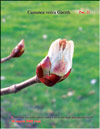
Fig.21 |
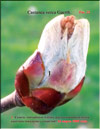
Fig.22 |
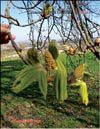
Fig.23 |
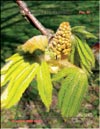
Fig.24 |
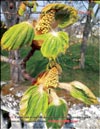
Fig.25 |
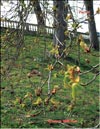
Fig.26 |
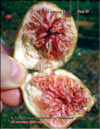
Fig.27 |
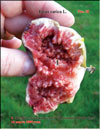
Fig.28 |
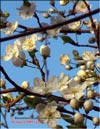
Fig.29 |
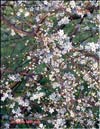
Fig.30 |
A week passed since the first cherry flowers opened and the trees were covered by an unbelievable number of unusually big
flowers (Fig. 31 and Fig. 32). It is almost impossible to see the sky and the branches through the thick covering of cherry flowers!
I have never seen such a flowering, although I was born and grew up in the south of Russia where cherry was an ordinary phenomenon:
cherry trees grew everywhere – in gardens, along the roads and in forest plantations! So, I know very well from my childhood what
a flowering cherry is, but I have never seen any blooming like the cherries we have now in France, even more so, in the middle of
March, although I was born much to the south of our French estate.
Cherries were not the only ones which began to bloom so stormily. Our magnolia garden turned into a blossoming kingdom! In
the middle of March magnolia buds which endured January frosts and snow and February icing began to blossom out! Enormous
amazing flowers appeared from the buds to meet the Sun! Their size is thrilling, although it is not something so new for us now, but
the flowers which appeared on our magnolias this year are much bigger than they were before! The fluffy and warm external protective
petals of the buds opened and tender and amazingly beautiful flowers began to peep out from them.
Magnolia Soulangeana’s enormous buds appeared in the middle of March (Fig. 33 and Fig. 34) and by March 21 they
become much bigger and began to open (Fig. 35)! As it already became a norm, the buds of Magnolia Soulangeana — hybrid
"Iolanthe" astounded us by their size and beauty (Fig. 36)! The petals of flowers were so squashed up within protective shells
that they hurried to break loose from their grip to greet the Sun! A young magnolia leaf also longs for light together with the flower
which, actually, should not happen! On “feeling” the freedom, the petals rushed to the light and in just several days became much bigger
than the already restrictive protective shell (Fig. 37).
Magnolia "Wada’s picture"’s buds broke through protective shells too (Fig. 38): poor buds had to shrink within their relatively
small shells, which, nevertheless, protected them from dieing from frost and icing! Straightening themselves up, the tender buds began
to grow vigorously under the rays of the still cold March Sun (Fig. 39) becoming bigger with every passing day (in the direct sense of the
word) and were ready to show their fragile and tender beauty to the whole world (Fig. 40).
|
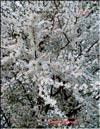
Fig.31 |
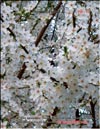
Fig.32 |
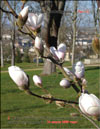
Fig.33 |
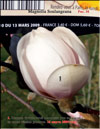
Fig.34 |

Fig.35 |
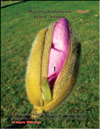
Fig.36 |
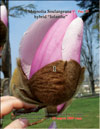
Fig.37 |
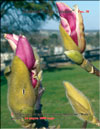
Fig.38 |
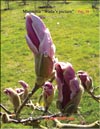
Fig.39 |
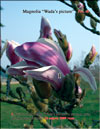
Fig.40 |
Most likely some magnolia trees began to “miss” the snow and covered themselves with white flowers. Look at Magnolia “Kobus”,
Citron’s trees glazed with white flowers (Fig. 41 and Fig. 42) and we are still in the middle of March! The snowflake-buds of Magnolia
“Kobus”, Citron open up and we can see a small sun in each magnolia “snowflake” (Fig. 43)! Magnolia "Loebneri", Merill’s
light-rose buds began to open too (Fig. 44 and Fig. 45). Magnolia “Royal Crown’s” flowers jumped from their protective shells with
“space speed” and tried to rid of them as quickly as possible (Fig. 46). On achieving this, they opened up to meet the Sun with true royal grace
(Fig. 47). According to its “star” status, Magnolia “Star Wars” kept pace with others and even tried to leave them behind (Fig. 48 and
Fig. 49), while Magnolia “Soulangeana Lenei” is not in a hurry to open its buds, saving the vital force for its own “hour of triumph”.
Nevertheless, they are already enormous and the still closed up petals have an extraordinarily rich colour (Fig. 50)!
|
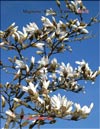
Fig.41 |
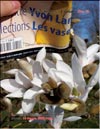
Fig.42 |
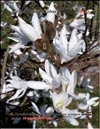
Fig.43 |

Fig.44 |
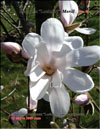
Fig.45 |
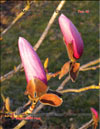
Fig.46 |
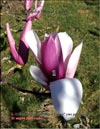
Fig.47 |

Fig.48 |
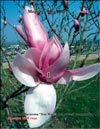
Fig.49 |

Fig.50 |
There is one fact which passed unnoticed and was overshadowed by this blooming and fragrant fairy-tale — the richness of the
colour which magnolia flowers and all the rest of our plants have! The plant breeders aimed to obtain this kind of colour richness in
their magnolias which grow in the most favourable conditions: in the best soil, at optimum temperatures etc. In our case the soil is the worst
one can ever find and the weather is highly unfavourable, but, nevertheless, the flowers of our magnolias are of unbelievable size and have
an extraordinarily rich colour which the breeders cannot get no matter how hard they try! This indicates that plants get everything necessary
for producing such a colour in the active area of the psi-field generator! It is of interest that the colour richness becomes stronger with every
passing year which can be observed with the naked eye. It is enough to look at any picture of blossoming magnolia to be sure of that.
This year magnolias began to flower when the sun activity was still insufficient, the soil (the most unfit for magnolias) was not warmed
enough and the arboreal sap moved very slowly within the “vessels” of the plants. Despite all these highly unfavourable conditions, magnolia
buds (and not only them) are literally flooded with powerful vital energy! Where did plants get it from, considering the above conditions? It
came from the source of vital force which I call the psi-field generator or dark matter generator!
The programs which were installed in the generator created properties and qualities which no plant has ever had in Midgard-earth! The
non-freezing arboreal sap, the blood of plants, and other changes made it so that the plants preserved their outward appearance, but acquired
fundamentally new qualities! The only imperfection here is that even the non-freezing arboreal sap moves along the “vessels” of the plants
insufficiently quickly at low temperatures. If we draw a parallel between animals which are divided into cold and warm-blooded and plants,
the latter can be attributed to the “cold-blooded” living organisms, the vital processes of which depend on the external temperature. Therefore,
one of next tasks will be to increase the mobility or fluidity of the arboreal sap at low temperatures, including below zero!
If this can be achieved, then the plants will produce fruits in winter under open sky, not in greenhouses! Well, these are just some thoughts
about future tasks which have to be solved, no matter how unbelievable they may be on the face of it! In fact, until quite recently the already
solved tasks were either the ravings of a madman, as some people thought, or unrealizable fantasies, as others thought, but now they are
objective reality! No matter whether someone likes it or not! One just needs to continue searching for solutions and use a creative and
unconventional approach to a problem. Well, all this will be in the future and now let us come back to the present objective reality.
Magnolia “Betty” blossomed in the second half of March. Its flowers grow prettier with every passing year, just as other magnolias
in our park do; is there a limit to their beauty, I wonder (Fig. 51 and Fig. 52)! We can say the same about Magnolia “Heaven Scent”, the
enormous and magnificent buds of which have just began to open (Fig. 53 and Fig. 54)! The buds of Magnolia “Merill”, Rosea look like
funny rose octopuses (Fig. 55) and here it is the first “visitor” of the already fully opened bud, a bumble-bee (Fig. 56)! If we look into the bud
we can understand what the bumble-bee was looking for (Fig. 57). It was nectar which the flowers of magnolias began to produce at
this time of year: when soil has not warmed up yet after winter frosts! It is a pity that pictures do not allow us to smell the aroma of the blossomed
magnolias, but if they could everybody would find themselves in a “perfume” garden! In fact, every magnolia has its own unique scent and playful
wind mixes them up and creates amazing perfume masterpieces! The wind changes direction, unexpectedly darts away and then unexpectedly calms,
thus creating the surprising melody out of the smells of blossoming magnolias!
Sometimes Nature creates very interesting images. If we glance at the picture of Magnolia “Star Wars” (Fig. 58), we may be surprised
at how these buds remind us of the heads of rose flamingos which proudly walk about the shoals of Lake Victoria. You look at them and feel that
the “flamingos’ heads” are just about to turn… Although it is very pleasant to live in the world of images, it is time to go back to the world of
reality which sometimes can be much richer than one’s imagination, especially when the matter is about phenomena created by the psi-field
generator! So, let us come back to the real world which strikes any imagination!
In the second half of March magnolias continue to blossom in the world which the dark matter generator created and carefully maintains.
The enormous flowers of snow-white Magnolia “Leonard Meissel” opened up fully, looking charming under the sun rays (Fig. 59).
However, magnolias were not the only ones that strike with their beauty and the size of their flowers. It is incredible, but it is a fact: the first
leaves and a lot of buds appeared on the branches of apple-trees in the second half of March (Fig. 60), although according to reference data,
apple-trees should blossom not earlier the end of April or May, if the weather is warm!
|
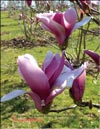
Fig.51 |
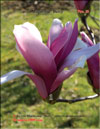
Fig.52 |
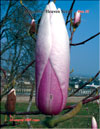
Fig.53 |
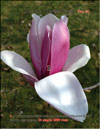
Fig.54 |
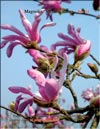
Fig.55 |
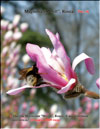
Fig.56 |
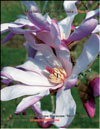
Fig.57 |
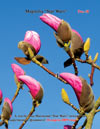
Fig.58 |
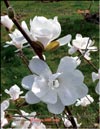
Fig.59 |
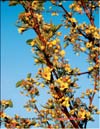
Fig.60 |
Again, the flowers on the branches of our apple-trees are considerably bigger than ordinary ones (Fig. 61).
The Japanese plum let out its young leaves which from a distance look like unusual light-green flowers (Fig. 62) the “petals” of
which directed upwards like the arrows. Enormous and dense, dark-green “old” leaves strengthen this impression. Even if we come
closer, young leaves of the Japanese plum look more like feathers of a fairy-tale bird than leaves (Fig. 63)! However, it is not young
leaves, but precisely old leaves of this subequatorial plant that cause a surprise: they look like new ones as if there were no autumn
night frosts, biting frosts and snow in January and, finally, the February icing! Old leaves are succulent, green and full of life.
The emerald-light-green young leaves of the red raspberries (Rubus daeus) which appeared on canes in the second half
of March surprised us too (Fig. 64). Soon we can see its simple but pretty inflorescence. It is incredible because the red raspberry
flowers in the second half of June! We can observe an even more unbelievable thing: yellow raspberries (Rubus ellipticus)
have emerald-light-green young leaves (Fig. 65) simultaneously with its inflorescences, but they do not start flowering earlier
than in the beginning of August (Fig. 66)! So, this is a real surprise, especially, taking into account the fact that yellow raspberries
bloomed at the end of March, before the red raspberries!
Some of the red currant’s (Ribes vulgares Lam.) inflorescences are already open and hide themselves under young leaves
(Fig. 67). Certainly, the flowers of the red currant cannot compete with that of magnolias, but these little inflorescences have their own
modest beauty (Fig. 68)! Moreover, let us not to forget that we are still in March! The black currants (Ribes nigrum L.) keep pace
with the red one. Its flowers have blossomed and are full of nectar, waiting for the first visitors-gourmands (Fig. 69 and Fig. 70)!
We are at the twentieth of March, and the inflorescences of the black and red currant appear on the canes simultaneously
with young leaves!
|
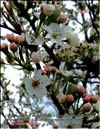
Fig.61 |
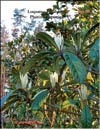
Fig.62 |
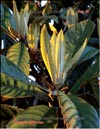
Fig.63 |

Fig.64 |
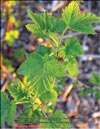
Fig.65 |
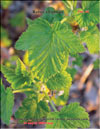
Fig.66 |
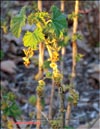
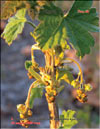
Fig.68 |
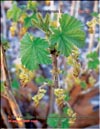
Fig.69 |
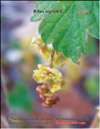
Fig.70 |
So, we witness another “miracle”: young leaves and inflorescences come into the world from the buds at one and the same
time and very quickly grow without doing any harm to each other! This kind of thing just cannot exist, but it does! There
is another very interesting and surprising detail in the “berries matter”: the inflorescences of the yellow raspberries and red currants,
which the specialists consider to be very tender and capricious, appeared and began to blossom earlier than that of their firmer
“colleagues” – the red raspberries and black currants! According to reference data, the inflorescences of the red currant does not
appear earlier than the second half of May, and the yellow raspberry – the beginning of August! Besides, this happens
usually in the south when the weather is warm enough, which, certainly, cannot be said about the Royal valley in March of 2009!
In addition to the abovementioned “miracles”, we continue to see figs, both ripening and already mature, on the still
naked branches (Fig. 71)! If we see figs in one more month, we could then tell about their all-year-round fruiting! As a
result of the psi-generator working, even the tenderest kind of figs, such as “Bloody”, for example, produced figs both in summer
and winter despite frosts of 20 degrees, snow and icing over!
Mushrooms keep pace with figs. They also “decided” to turn to all-year-round production. Newer and newer Maitake mycelia
appear here and there. They continue to surprise us by their size and the variety of colouration (Fig. 72 and Fig. 73). Champignons
(Fig. 74) and Shitakes (Fig. 75 and Fig. 76) readily keep them company. Their bodies appear in the glades and among the trees of
our park as if this is the way they always did! Shitake showed their hats among the emerald-green grass which remains unharmed
after January frosts and snow-falls and February icings, and in March it is as green and fresh as if being recently grown (Fig. 77)!
It is surprising, but this is a fact: the arboreal sap of the grass, as well as of all the plants in our domain, does not freeze in the active
area of the psi-field (dark matter) generator even at the temperatures of 20 degrees below zero!
It is the end of March and the glades of our park are still covered with blooming Cowslips which continue to appear here and
there. These spring flowers have been blooming already for almost two months which is quite unusual and surprising (Fig. 78 and
Fig. 79). Tulips show off too here and there (Fig. 80). Their appearance cannot help surprising us: all this time their bulbs were in
the soil when it was raining, when the soil was solid frozen during biting frosts of 20 degrees and when everything was covered
by the crust of ice!
|
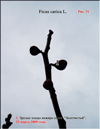
Fig.71 |
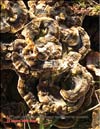
Fig.72 |
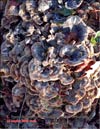
Fig.73 |
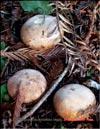
Fig.74 |
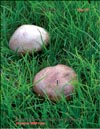
Fig.75 |
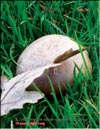
Fig.76 |
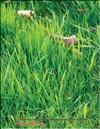
Fig.77 |
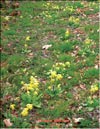
Fig.78 |

Fig.79 |
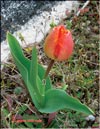
Fig.80 |
The bulbs of tulips and hyacinths should have surely died!!! But they did not, due to one and the same reason – the psi-field
generator made the plants of our domain invulnerable to dampness, frosts, heat and drought! The pictures of the neighbouring
area prove this.
The Nature outside our domain is fully corresponds to that of March. There is not even a faint resemblance of green grass
beyond our fence, everything is still sleeping there (Fig. 81)! On March 16, 2009 the fields and meadows around our domain are
still grey and unattractive (Fig. 82, Fig. 83 and Fig. 84). Only by March 25, 2009 did the first sparks of young green grass modestly
appear among last year's dead grass (Fig. 85 and Fig. 86).
And at the same time Nature continued to rage with vital force within the bounds of our domain!
Magnolia “Iolanthe”’s enormous flowers continue to blossom. They are so big that the branches look very small in
comparison with them (Fig. 87). At the background of the picture you can perfectly see the emerald glades of our park. The
blossoming flowers are so enormous and inconceivably beautiful (Fig. 88 and Fig. 89)! When you look at the young tree, the
branches of which are covered with blossoming flowers, there is the impression that it is not a tree, but a thin twig with flowers.
This is because the flowers of magnolia “Iolanthe” are so huge that everything in their background seems small (Fig. 90);
|

Fig.81 |
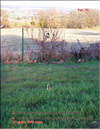
Fig.82 |

Fig.83 |
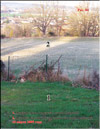
Fig.84 |
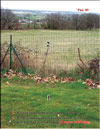
Fig.85 |
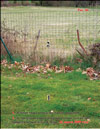
Fig.86 |
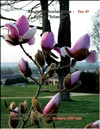
Fig.87 |
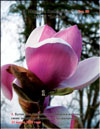
Fig.88 |
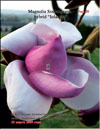
Fig.89 |
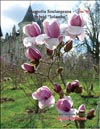
Fig.90 |
they are huge and fairy-tale wonderful, especially in the sun’s rays (Fig. 91 and Fig. 92). Some flowers already timidly
show their “core” in which stamens and pistil “hide” (Fig. 93). With all their immensity, the petals of the flowers did not
lose their elegance and tenderness, and the sun rays create the illusion of fragility, shining through them (Fig. 94). It seems
that the first weak gust of breeze will wreck this unearthly beauty, but even strong and cold wind was unable to do this,
although in earlier years a temperature drop and cold winds resulted in fading of the already blossoming flowers. In 2009
spring frosts and winds could not do their nasty business — the flowers of Magnolia “Iolanthe” remained intact
and wonderful and continue to blossom to meet the Sun every morning…
The flowers of Magnolia “Soulangeana Lenei” are extraordinarily large this year. Their petals are very bright and
have a very rich colour which should not be observed on such poor soil (Fig. 95 and Fig. 96). Magnolia “Wada’s picture”
keeps pace with these magnolias (Fig. 97)! Actually, all magnolia flowers of 2009, without any exception, are extraordinarily big
even in comparison with magnolias of previous years, although the size of our magnolia flowers then was considerably bigger
than that of any outside the boundaries of our domain. I wrote about it in “The Source of Life 1, 2, 3 and 6”, but what we have
witnessed this year became the next surprise even for us!
The opening buds of magnolias, in particular Magnolia “Wada’s picture”, are matchless and delightful! The buds
open more with every passing day and their beauty takes the breath away (Fig. 98)! The petals have an extraordinary bright
colour; the contrast is especially striking between deep, snow-white colour of the internal surface of the petals and the external
one, the colour of which gradually changes from vine to pure-white! On piercing the petals of Magnolia “Wada’s picture”,
the sun rays create the illusion that petals are made of the thinnest china (Fig. 99). At the same time every bud of this magnolia is
unique and it is impossible to find two identical ones. The petals have a wavy form which does not repeat in them thereby
creating this uniqueness (Fig. 100 and Fig. 101).
|
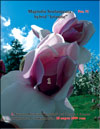
Fig.91 |
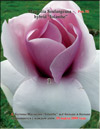
Fig.92 |
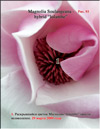
Fig.93 |
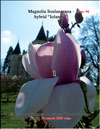
Fig.94 |
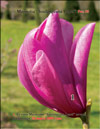
Fig.95 |
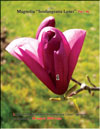
Fig.96 |
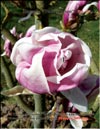
Fig.97 |
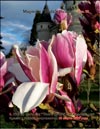
Fig.98 |
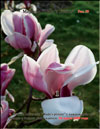
Fig.99 |

Fig.100 |
Frankly speaking, it is very difficult to find the words to describe what is happening in our park and magnolia garden
in the spring of 2009. There are no words to convey the state which one experiences on looking at the blossoming magnolias.
When one looks at the branches covered by enormous flowers of Magnolia “Star Wars”, it is hard to realize that they
flower on a young tree of three or four meters high, not on a small bush (Fig. 102)! It is enormous buds that cause the
impression of a thin trunk and branches of a young tree, which is not surprising — the diameter of still unopened buds of
Magnolia “Star Wars” promises to be more than half a meter (Fig. 103)! And now they look in the rays of a
descending Sun nacreous and at the same time velvety and that creates a feeling of “unearthly” origin (Fig. 104 and Fig. 105).
The innumerable buds which appeared on the branches of Magnolia “Royal Crown” are huge too (Fig. 106). Look
how amazingly elegant they are (Fig. 107 and Fig. 108)! They really look like a crown in the rays of the descending sun, thus,
justifying their name – the “Royal Crown” (Fig. 109).
The flowers on Magnolia “Merill”, Rosea have already blossomed fully. They look like small octopuses which have
beautiful petals instead of tentacles (Fig. 110).
|
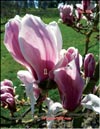
Fig.101 |
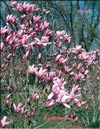
Fig.102 |

Fig.103 |
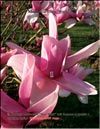
Fig.104 |
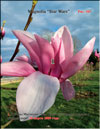
Fig.105 |
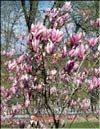
Fig.106 |

Fig.107 |

Fig.108 |
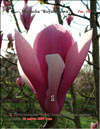
Fig.109 |
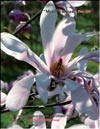
Fig.110 |
It is really admirable thing to see, magnolia trees strewed with light-rose flower-“octopuses” (Fig. 111)! As a matter of
opinion, when you look at the trees covered by flowers of such size and in such an amount while there is not even a hint
of something blossoming around, you feel as if something enchanting and magical surrounds you, as if you find yourself
on some fairy island (Fig. 112)! The nursery transplant of Magnolia Soulangeana “Apollo” has its first extraordinary
bright flowers of enormous size (Fig. 113 and Fig. 114). When its buds, dark-wine at the bottom, open, the snow-white
interior of the petals with violet “veins” reveals itself to the world. The flowers of this magnolia do not open at once:
the upper layer of the petals is the first to open, thus, uncovering the next group of petals which hide the heart of the
flower (Fig. 115). Some more days and… the last “bastion” of petals surrenders, revealing this heart to the shining sun
(Fig. 116)!
Magnolia Soulangeana “Galaxy” keeps pace with other magnolias regarding the beauty and size of the
flowers (Fig. 117). In fact, when it comes to flowers, it is impossible to compare one flower with another: the beauty
of each flower is unique! We can talk only about one’s personal preference, but when you look at enormous blossoming
magnolia buds in our garden, you are unable to make a choice: beauty is everywhere, wherever you may look! Certainly,
the form of our flowers does not differ from that of their “colleagues” outside our domain, but their fantastic size,
richness of colour and velvety structure of the petals make our flowering magnolias unique!
You will not be able to find anything of the kind anywhere on earth! Despite highly unfavourable growing
conditions (the worst soil, poor weather, etc.), such a miracle exists only due to the working of the psi-field generator
or dark matter generator! I have mentioned it tens of times, but the importance and uniqueness of the phenomena which
constantly happen in our domain make it necessary to repeat it again and again to destroy any illusion of something unreal
and impossible which a reader may have! No matter how fairytale, magical or impossible it may look, everything that happens
within the bounds of our domain is real, material and exists as a result of application of the knowledge about which
modern science has no idea! Yes, our domain can be called a fairy island, but... only the fairy island of knowledge
amongst surrounding ignorance! Exactly the real application of this knowledge creates this magic island in the middle of
surrounding commonness. Exactly this fairy island gives the possibility to show what the correct understanding of nature
and its laws can really do in practice, how it can create what Nature was unable to create!
In order to find confirmation of these words, we can take a glance at any magnolia flower and not only them. Really,
it is very difficult to express the delight caused by the charming beauty of blossoming flowers: you have just admired the
beauty of one magnolia as you are carried away with the second and the next moment you are delighted with the third one!
There are no words to convey the total admiration for each one. Even the very pictures of amazing magnolia flowers render
a “magical” influence – one cannot help looking at them again and again, enjoying the beauty. Most likely, the psi-field
generator “charged” them with some unprecedented attractive force. Let us glance at the picture of, for example, Magnolia
Soulangeana “Galaxy” and make sure of this. Pictures can “freeze” instants of life for us to contemplate them again
and again, or to embrace the whole layer of the past and compare it with the present (Fig. 118, Fig. 119 and Fig. 120).
|
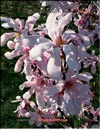
Fig.111 |
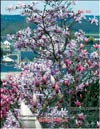
Fig.112 |
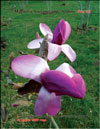
Fig.113 |
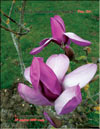
Fig.114 |
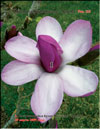
Fig.115 |
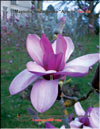
Fig.116 |
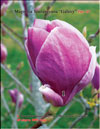
Fig.117 |
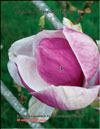
Fig.118 |
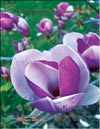
Fig.119 |
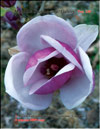
Fig.120 |
Look at these shockingly beautiful “frozen instants”: thousands of snow-white petals of Magnolia “Kobus”, Citron (Fig. 121)
or fragile tenderness of Magnolia “Georges Henry Kern” (Fig. 122).
Magnolia “Yellow Bird” and Magnolia “Butterfly” pleased us especially this year. These very rare magnolias grow perfectly in environmental
conditions incompatible with their life and produce flowers much bigger than all of their rare “folks” outside our domain. Moreover, it is
impossible to see such bright-yellow colour petals anywhere else outside our domain! Here are some photos which confirm the first statement:
the enormous buds of Magnolia “Yellow Bird” (Fig. 123, Fig. 124 and Fig. 125). The branches of this still young tree look like thin
twigs in comparison with such enormous buds! And here is the confirmation of the second statement: the flowers of Magnolia “Yellow
Bird” (Fig. 126). On seeing such an intensive and bright yellow colour, any specialist in magnolias would be highly surprised, because
such a colour has been never observed in these magnolias. It cannot be, but it is!
In order to understand how much the size of the buds and their colour changed over the years, let us compare them. Magnolia “Yellow
Bird” flowered in 2004 for the first time and we took it as a miracle then, taking into account the quality of the soil. In 2004 the colour
of petals was light-yellow, the size of flowers was the same as all other magnolias of this type have in the rest of the world (Fig. 127). We
can judge about the size of the bud comparing it with the thickness of the branches and bearing in mind that the nursery magnolias were
planted in limestone in 2003 and became several times higher over the following years, see “The Source of Life-6”. In the following year,
2005, the flowers already acquired the deep bright-yellow colour and petals became more succulent and acquired an unusual velvetiness
(Fig. 128). The buds of 2009 did not lose the depth of the colour and fleshiness of the petals and in addition became much bigger
(Fig. 129).
There is another very unusual phenomenon related to Magnolia “Yellow Bird”. It was bred as a result of selectivity and is a
hybrid of several magnolias. Therefore, when one of the young trees of this magnolia was planted into the area of a certain natural
anomaly on which the action of the psi-field generator was superimposed, it resulted in one and the same tree appearing in qualitatively
different conditions. As a result, the genes of Magnolia “Merill”, one of the parents of Magnolia “Yellow Bird”, began
to prevail on one half of the tree and the purely white buds of exactly Magnolia “Merill” type appeared there, and the other
half of the tree was covered by buds of the actual Magnolia “Yellow Bird” (Fig. 130 and Fig. 131).
|

Fig.121 |
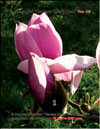
Fig.122 |

Fig.123 |

Fig.124 |
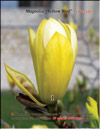
Fig.125 |
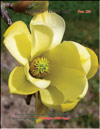
Fig.126 |

Fig.127 |

Fig.128 |
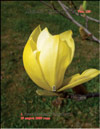
Fig.129 |
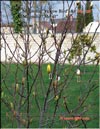
Fig.130 |
And when the buds opened, it appeared that they differed not only in colour, but also in the form of the flowers and
petals (Fig. 132)! This kind of thing is incredible and impossible in principle from the point of existent genetics and
selection! It is another unexpected surprise from the psi-field generator…
Magnolia “Yellow Bird” was not the only one: another yellow flowered magnolia — Magnolia “Butterfly”
— acquired an enviable yellow colour in the active area of the generator! This magnolia bloomed in 2004 for the first time and,
although its flowers were the same as in the rest of the world, the colour of the flowers was difficult to call yellow, it was, most
likely, a shade of yellow, although, the plant breeders worked hard and long to get it (Fig. 133). However, the blossoming
flowers of Magnolia “Butterfly” had the most real yellow colour by the next year (Fig. 134) and the petals became much
denser and bigger….. Here we have a quite another flower which acquired a certain nobleness and elegance. By 2009 the flowers
of Magnolia “Butterfly” became yet more unusual, the yellow colour became richer and deeper, and the form — even
more fantastic (Fig. 135). It is really impossible not to keep our eyes glued on the blossoming buds — they are really amazing
and appear almost unearthly; the plant breeders should call this magnolia “Yellow star”, instead of “Butterfly” (Fig. 136).
However, if we glance at the fully opened flower of this magnolia, its petals indeed look like the wings of a butterfly (Fig. 137)…
a very big one, because the flowers of Magnolia “Butterfly” became gigantic over the years (Fig. 138)!
Magnolia “Serena” bloomed for the first time this year and the buds immediately appeared to be enormous. It has
an interesting feature: every tier of its petals has a different shade, so we can observe a surprising gradient of colours (Fig. 139
and Fig. 140).
|
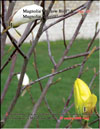
Fig.131 |

Fig.132 |
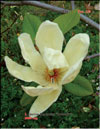
Fig.133 |
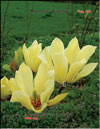
Fig.134 |
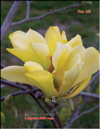
Fig.135 |
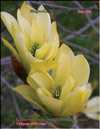
Fig.136 |

Fig.137 |
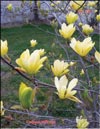
Fig.138 |
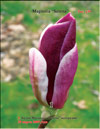
Fig.139 |
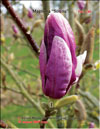
Fig.140 |
The buds of Magnolia Soulangeana “Honey” are extraordinarily enormous and numerous this year (Fig. 141).
Again, the unusual richness of the colour, the dense structure of the petals and their velvetiness give the impression that
you see living “porcelain” (Fig. 142 and Fig. 143)! Magnolia “Linely”’s buds are huge and amazing too (Fig. 144):
when blossoming, they create a striking harmony between the form of petals and the colour. There is no magnolia which
would have the following colour spectrum: smooth transition from vinous at the bottom of the petal to light-violet at the
tip (Fig. 145 and Fig. 146). The blossoming light-violet enormous buds of Magnolia “Ricky” look like fairy jelly-fish
which is submerging into mysterious ocean depths (Fig. 147)! And when you look at the bud from above, it strongly
resembles an opening rose (Fig. 148).
I can go on describing the blooming magnolias and their enormous flowers endlessly, but I think it is better to look
at the picture of our castle buried in bright and rich colours in order to make sure of the saying “a picture paints a
thousand words” (Fig. 149 and Fig. 150).
|
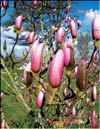
Fig.141 |
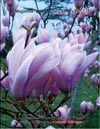
Fig.142 |
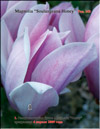
Fig.143 |
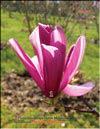
Fig.144 |
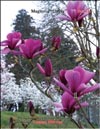
Fig.145 |

Fig.146 |
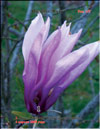
Fig.147 |
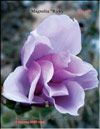
Fig.148 |
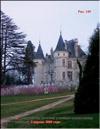
Fig.149 |
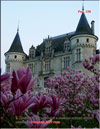
Fig.150 |
Then it will be clear without any words that a fairy-tale is possible in our reality, because one cannot call what is
going on in our domain anything other than a fairy-tale or magic which becomes possible only due to the understanding
and knowledge of real natural laws! This is not a fairy mirage, but absolute reality which will not disappear anywhere,
no matter how hard you may rub your eyes or blink (Fig. 151 and Fig. 152)!
Magnolias were not the only plants that bloomed “in full sail”! The buds of Japanese Camellia «Shintsukasa»
opened at the end of March (Fig. 153)! This evergreen is widespread in countries with a subtropical climate and
grows under the open sky in areas with very mild winters and high humidity. There is no problem with humidity in
France in autumn and winter, which cannot be said about the “mildness” of the climate: autumn and spring night
frosts, especially strong in the last years, winter frosts up to twenty degrees, snow that covers the earth for weeks
and thick ice on lakes and rivers for several months! So, if we take into account reference data, Japanese Camellia
should have died in such environmental conditions in the open ground, but the plant did not die and feels itself
perfectly at home despite frosts and icing! Look at its leaves – they are absolutely unharmed – and opened buds
which are considerably bigger than those of camellias outside our domain (Fig. 154)!
At the end of March Rosa floribunda is already fully covered with leaves despite frosts, snow and icing
(Fig. 155). The tender light-green leaves of the Tulip tree (Liriodendron Tulipifera) shyly appeared from the
buds (Fig. 156 and Fig. 157). Maple bloomed energetically at the end of March too (Fig. 158), although it should do
it in the second half of May (Fig. 159 and Fig. 160).
|
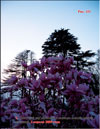
Fig.151 |
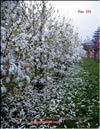
Fig.152 |
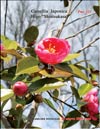
Fig.153 |

Fig.154 |
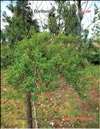
Fig.155 |
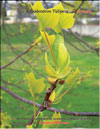
Fig.156 |
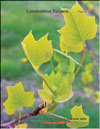
Fig.157 |
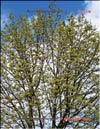
Fig.158 |

Fig.159 |
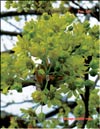
Fig.160 |
Its Japanese “colleagues” kept pace. The buds of Japanese maple “Green lace” (Acer Palmatum Japonicum “Green
lace”) released tender leaves at the end of March (Fig. 161), which is highly surprising, because, according to reference
data, this slowly growing bush does not tolerate impregnation of limestone in the soil and dies, and we
have it growing in pure limestone!
Japanese maples are very sensitive to frosts and require warming or even transplantation into a hothouse for the whole
cold period. In our case, Japanese maple was all the time under open sky and successfully survived 20 degrees frosts in
January, snow and icing in February and calmly let its leaves out at the end of March (Fig. 162)! But it should have died!
Limestone, snow and frost should have killed it! Well, it did not happen: in March its young leaves met the Sun! Again,
this “miracle” happened in the active area of the psi-field (or dark matter) generator! Moreover, in ten days the maple’s
leaves were fully formed (Fig. 163). At the same time not a single sprig of maple died because of frost or icing (Fig. 164).
The spring shower made its leaves looked like “green lace” which Mother-Nature had carefully woven (Fig. 165).
Another Japanese maple, the variety “Fire glow”, (Acer Palmatum Japonicum “Fire glow”) kept pace with
“Green lace”. On looking at its young leaves, one can perfectly understand why he is given such a name (Fig. 166): the
tips of its leaves become bright scarlet over the time and look like a living flame in the wind. By the middle of April the
“fire glow” had already released its inflorescences (Fig. 167)! But it should have died too in pure limestone, frosts and
icing!
Lusitanian cherry-laurel (Prunus laurocerasus L.) did not lose its evergreen leaves during weather calamities
and at the end of March had inflorescences (Fig. 168)! According to reference data, Lusitanian or Portuguese cherry-laurel,
blooms in June in its Motherland and prefers rich soil! And here is what happened within the bounds of our domain: it
produced inflorescences at the end of March, which gained force at the beginning of April (Fig. 169) and by the middle
of April was in full bloom (Fig. 170 and Fig. 171)! And this is another psi-field generator “miracle”.
|
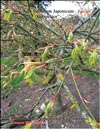
Fig.161 |
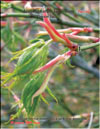
Fig.162 |
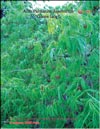
Fig.163 |
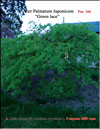
Fig.164 |

Fig.165 |
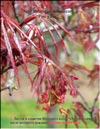
Fig.166 |
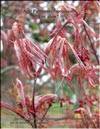
Fig.167 |
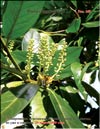
Fig.168 |
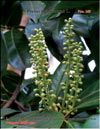
Fig.169 |
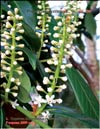
Fig.170 |
Young leaves of the Japanese plum (Photinia Japonica) grew considerably over the last ten days and look more like
the old ones, but the silvery-light-green colour still distinguish them from their “senior comrades” (Fig. 172 and Fig. 173)!
At the beginning of April the Japanese cherry (variety “Kanzan”) was covered in numerous buds which appeared simultaneously
with bronze-orange leaves (Fig. 174). Probably it is the only plant in our domain which prefers the lime soil and for which pure
limestone poses no mortal threat! By the middle of April the buds opened fully and the branches dressed up in rose lace made
of blooming flowers (Fig. 175). Again, the distinctive feature our Japanese cherry “Kanzan” is that its flowers are considerably
bigger than those which grow outside our domain (Fig. 176).
The wild cherry (Prunus cerotina “Globulus”) blooms stormily; its flowers are very big too and we can imagine the
size of the future cherries (Fig. 177 and Fig. 178)! In the beginning of April the “Chanticleer” pear (Pyrus “Chanticleer” pear)
bloomed dramatically too, and its branches are covered all over with flowers (Fig. 179). This variety of pear should not flower
earlier than in May (which happens in favourable conditions – warm weather, good soil, etc.), but our pear didn’t pay any attention
to the very chilly weather in the beginning of April and each flower is two or three times bigger than normal ones (Fig. 180)!
|
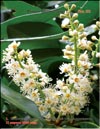
Fig.171 |
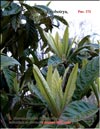
Fig.172 |
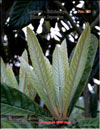
Fig.173 |
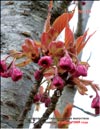
Fig.174 |
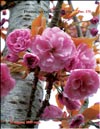
Fig.175 |
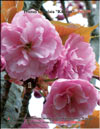
Fig.176 |

Fig.177 |
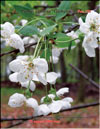
Fig.178 |
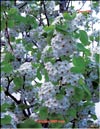
Fig.179 |
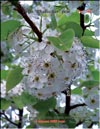
Fig.180 |
There are so many flowers on the branches that it is very difficult to discern the leaves, and one gets the impression that
the pear trees are covered with numerous enormous snowflakes (Fig. 181 and Fig. 182).
At the end of March young light-green leaves appeared on the branches of the silver linden-tree (Tilia tomentosa) (Fig. 183
and Fig. 184). And by the middle of April bright green leaves shimmering with silver rustled on the linden-trees (Fig. 185) and the
linden path in our park had put on silvery-green clothes (Fig. 186).
Only a week passed since the young leaves and inflorescences appeared simultaneously and unexpectedly from the buds of
the chestnut (Castanea verca Gaerth.), which could not happen under any circumstance, but new facts confirmed that this
phenomenon was not some kind of natural misunderstanding. By the end of March young light-green leaves became enormous and
the inflorescences grew simultaneously with them and were developing normally, which is unbelievable indeed. It is the first time
this kind of phenomenon has been observed in this tree for the whole time of its existence (Fig. 187). By the middle of April the
leaves became much bigger and acquired an emerald-green color; the buds were formed fully and some of them even blossomed
(Fig. 188, Fig. 189 and Fig. 190).
|

Fig.181 |
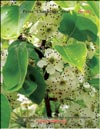
Fig.182 |
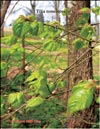
Fig.183 |

Fig.184 |
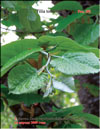
Fig.185 |

Fig.186 |
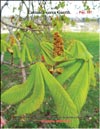
Fig.187 |
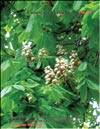
Fig.188 |

Fig.189 |
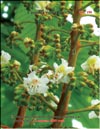
Fig.190 |
At the beginning of April the monkey puzzle tree (Araucaria araucana) had cones for the third time in one year
(Fig. 191 and Fig. 192)! This is yet another miracle happening in our domain in the active area of the psi-field generator! Another one,
but, surely, not the last one! The future will show how many unbelievable phenomena have yet to happen, but the next miracle, which
I just supposed would happen when I began to write this article, finally happened!
In beginning of April, the new ovaries appeared on the fig trees at the same time as young tender leaves (Fig. 193)! At the
beginning of the article I assumed only that if young figs appeared in April, we could talk then about the figs’ all-the-year-round
fructification! So, ten days passed and this supposition became reality! New fig ovaries appeared at the beginning of April on still
naked branches which have their buds opened timidly showing young leaves (Fig. 194)! The circle has been completed! In 2008 the
fig trees began to produce fruits in April and continued to do this for 12 months, as new figs which appeared on the branches at
the beginning of April in 2009 completed the annual cycle of fruiting.
Certainly, we observed some “miracles” regarding figs, as for example, three generations growing simultaneously on the
branches of the tree last summer, but the all-the-year-round fructification, especially of the tenderest varieties, is the most impressive
one!
The figs which appeared at the beginning of April began to grow quickly leaving the leaves behind! Look at the picture dated
April 4 (Fig. 195) and then April 5 (Fig. 196) and make sure for yourself! The figs grew in one day which can be noted even with
the naked eye. Very tender fig leaves came out fully from the buds only in several days (Fig. 197). Again, we witness a unique
phenomenon — the figs appeared simultaneously with young leaves! This kind of thing has never happened before!
The speed with which the figs grow is really staggering, because by April 9 they grew more and now cannot be called “ovary”.
While the leaves were still small (especially, if taking into account their size of 48 cm in 2008), the growing figs looked pretty
impressive (Fig. 198)! Certainly, we cannot say that they grow “by leaps and bounds” like in fairy-tales, but we do can say without
any doubts that they quickly grow day by day (Fig. 199). A young fig leaf almost did not change while figs grew quite notably
(Fig. 200).
|
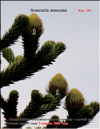
Fig.191 |
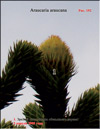
Fig.192 |
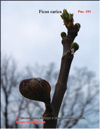
Fig.193 |

Fig.194 |
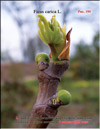
Fig.195 |
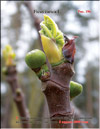
Fig.196 |
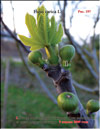
Fig.197 |
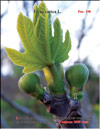
Fig.198 |
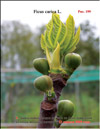
Fig.199 |
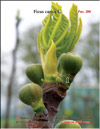
Fig.200 |
The inflorescences were completely formed by the end of March on the red raspberry (Rubus daeus) (Fig. 201) and
the red currant (Ribes vulgare Lam.) (Fig. 202), which blossomed in the first days of April showing to the Sun although
small but very pretty light-claret petals which, by the way, appeared at least two months earlier than they should (Fig. 203). The
black currant (Ribes nigrum L.) remained a little behind the red currant (which is surprising): the inflorescences appeared
by the end of March (Fig. 204) and they fully formed by April 4 (Fig. 205) and only on April 9 the flowers began to blossom
(Fig. 206). However, as for mass flowering, the black currant easily outran the red one which promises an unbelievable harvest
this year and, by the way, very early; and most likely, not the only one (Fig. 207)
At the beginning of April the golden currant bloomed too (Fig. 208), as well as the gooseberry (Ribes uva-crspa L.),
each flower of which looks like an ear-ring and there are so many of these “ear-rings” on the bushes (Fig. 209). It is of interest
that according to reference data, the roots of the gooseberry die off at a temperature of 3 or 4 degrees below zero, but there were
frosts of nearly 20 degrees this winter which lasted several days. I do not mention less severe frosts of 8 degrees which had been
occurring since October, 2008! Again, the gooseberry requires rich fat land which obviously is not the word for our pure limestone!
By the end of March we had ripe strawberries for the second time (Fig. 210)!
|
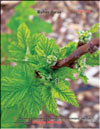
Fig.201 |

Fig.202 |
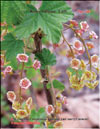
Fig.203 |

Fig.204 |
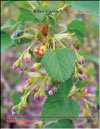
Fig.205 |
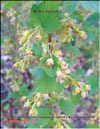
Fig.206 |
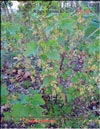
Fig.207 |
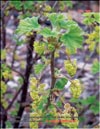
Fig.208 |
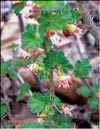
Fig.209 |
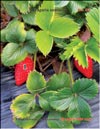
Fig.210 |
They “opened the season” of 2009 at the beginning of March and we had to wait the whole month for the next harvest,
as the vital activity of plants is low at low temperatures. Undoubtedly, it is high time to solve the problem of the fluidity of
the arboreal sap at low temperatures, including that of below zero. Only then it is possible to accelerate the fruit ripening
in autumn and winter. And not only fruits! All processes are slowed in plants at low temperatures: the growth of plants and
leaves, the blooming of buds and ripening fruits. These “problems” appeared when I succeeded in solving the problem with
freezing arboreal sap. However, similar problems do not exist in nature, because evergreens just die at a temperature of below
zero and conifers have a powerful protective bark and fall into some kind of hibernation, like bears do. However, even thick
bark does not always protect them from very severe frosts!
The arboreal sap, nevertheless, freezes at very low temperature even in conifers and tears their trunks. So, non-freezing
arboreal sap did not exist in Nature and there were no “problems” with it. But when the problem was solved and the arboreal
sap of any plant stopped freezing at twenty degrees below zero, and fully possibly, at lower temperatures, “side
problems” occurred! I say “fully possibly”, because we did not have temperatures lower than twenty degrees below zero in
our domain yet. I am sure that the arboreal sap will not freeze at much lower temperatures, but right now there are no proofs
of that! Although the very fact that the arboreal sap does not freeze at 20 degrees below zero already serves as undeniable
evidence that the task is solved.
Just a minor “side problem” is left to be solved: I have to increase the fluidity of the arboreal sap at low temperatures! In
the case of success, the vital activity of plants in autumn and winter will be very similar to that of summer! In order to understand
how strongly the fluidity of the arboreal sap influences plants and their vital processes, we examine the development of the
strawberry. This year the first strawberry harvest was gathered in the first days of March and the second one was ready on March
29. However, as soon as it became a little warmer, the new strawberries were already ripe within a week, on April 4; at the same
time small bushes intensely flowered and formed new buds (Fig. 211). One more week passed and a new harvest ripened, and
new flowers blossomed, and new buds are ready to appear (Fig. 212)! Some kind of a conveyer was switched on. Moreover, the
flowers and berries become bigger with each following flowering.
The forest strawberry (Fragana vesca L.) bloomed very enthusiastically by the middle of April (Fig. 213). Its flowers
covered all the glades of our park with a beautiful carpet. It is of interest that the flowers this year are much bigger than normal
ones which lead us to suppose that the berries will be considerably bigger too (Fig. 214). The bush the name of which we still do
not know stormily effloresced at the beginning of April (Fig. 215 and Fig. 216). Tulips (Tulipa L.) began to bloom at the beginning
of April (Fig. 217 and Fig. 218) and in the middle of April they flowered “at full speed” (Fig. 219 and Fig. 220).
|
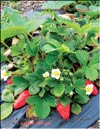
Fig.211 |
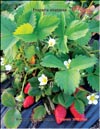
Fig.212 |
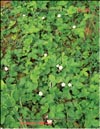
Fig.213 |
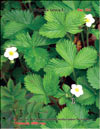
Fig.214 |
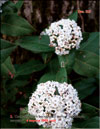
Fig.215 |

Fig.216 |
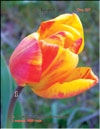
Fig.217 |
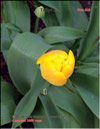
Fig.218 |
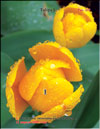
Fig.219 |
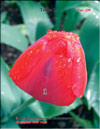
Fig.220 |
Their flowers are much bigger than they should be and the colour of the petals is extraordinarily bright and rich.
I have never seen such a deep colour in tulips (Fig. 221 and Fig. 222).
By the beginning of April all the glades in our park were covered with cowslips (Primula veris L.) (Fig.223), these
flowers grow so densely that it is difficult to believe that nobody planted them on purpose (Fig. 224). In order to make sure that
this is so, look at the picture of our linden path (Fig. 225). Numerous dandelions flower in the glades of our park (Fig. 226). Here
we again observe a unique phenomenon: each yellow-bright flower of the dandelion, which looks like a bright little sun, is
considerably bigger than those which grow outside our domain (Fig. 227). Daisies compete with dandelions in number invading
our meadows and glades (Fig. 228 and Fig. 229).
Champignons look slightly out of place among flowering daisies on the glades in the middle of April, just as they and other
mushrooms did in January, February and March (Fig. 230)!
|

Fig.221 |

Fig.222 |

Fig.223 |
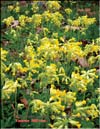
Fig.224 |

Fig.225 |
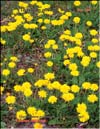
Fig.226 |
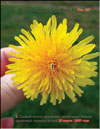
Fig.227 |

Fig.228 |
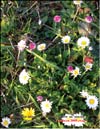
Fig.229 |
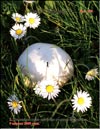
Fig.230 |
New Maitake mycelia continue to appear on the glades and stumps here and there (Fig. 231). The new type of mushrooms
the name of which we did not define yet appeared in the park in April (Fig. 232).
Almost all trees in our park put their young leaves on as early as the end of March (Fig. 233 and Fig. 234) and by the middle
of April everything became emerald-green (Fig. 235 and Fig. 236). At the same time everything just began to green in the
neighbouring areas. Our castle located on a small hill on the banks of the Loire, does look like an island of fairy-tale and magic
where life and colours rage while everything around is still grey and unattractive…
Before I finish the article, I would like to mention another phenomenon related to the psi-field generator on our domain.
Several years ago Svetlana chose some apricot trees in one of the fruit tree nurseries, but did not bring them to our orchard. She
just selected the trees from among other trees which differed in nothing! So, the apricot trees (Prunus armeniaca L.)
which Svetlana chose bloomed in March and by the first half of April had pretty large apricots on the branches (Fig. 237)! !
|
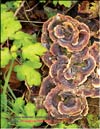
Fig.231 |
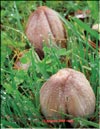
Fig.232 |
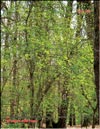
Fig.233 |
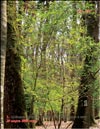
Fig.234 |
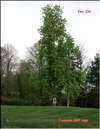
Fig.235 |

Fig.236 |
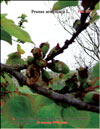
Fig.237 |
Other apricot trees of the same nursery did not even flower, because their flowering starts in the second half of May!
On choosing some trees in the nursery, Svetlana mentally connected them with all the other plants in our domain, and
all the time the psi-field generator (or the dark matter generator) influenced only these trees at a pretty long distance
from us, while all the other trees at the nursery continued “to behave” as normal apricot trees do in the rest of the world!
Thus, the psi-field generator can influence selectively any plant and, probably, at any distance, without “touching” even the
neighbouring plant of the same variety: one should just connect the necessary plant to the generator (it is enough to do it
telepathically)! However, one should know how to do it...
|
|
|